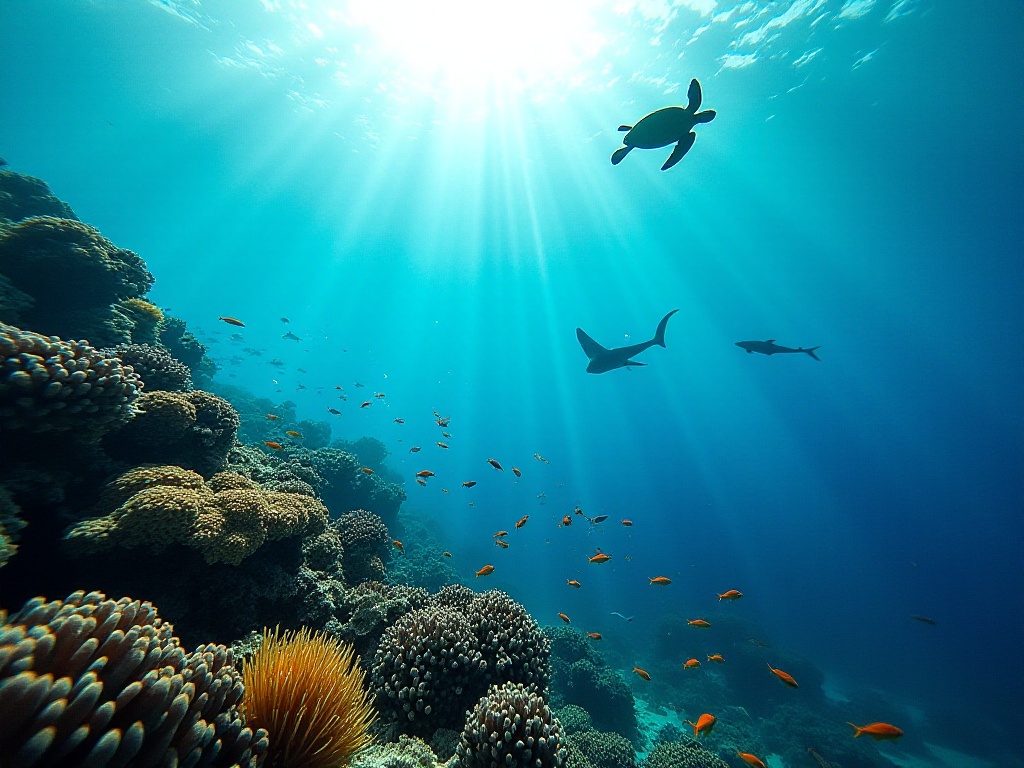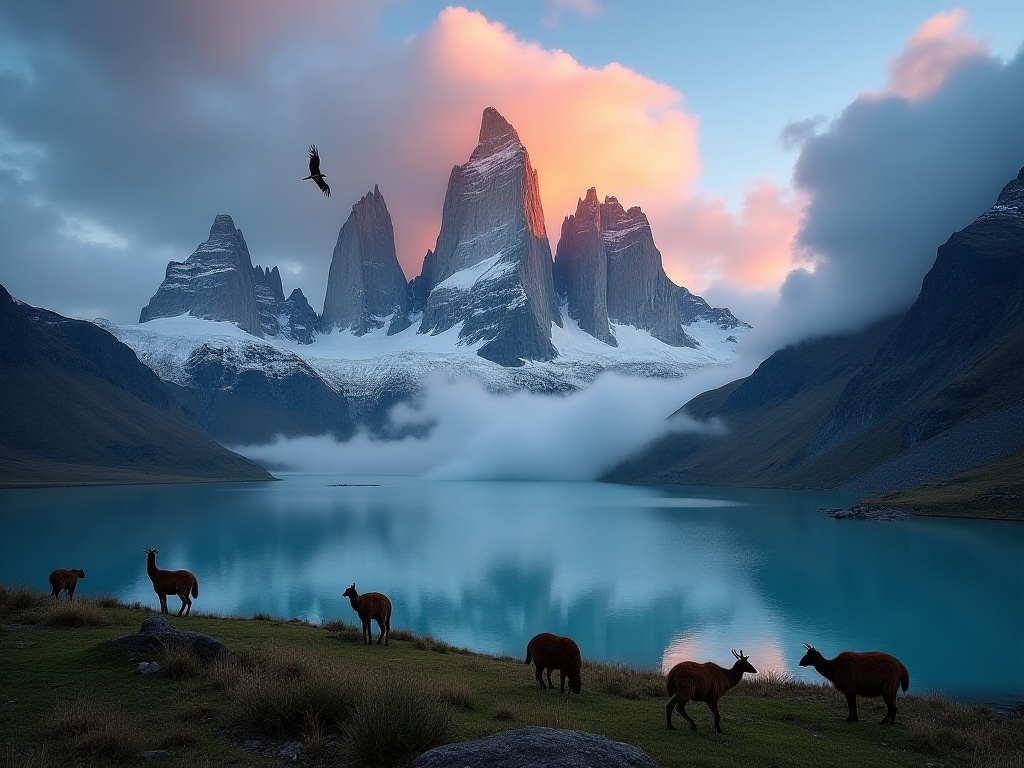Opening Thoughts
Are you like me, always feeling something missing in life? Does the 9-to-5 routine leave you breathless? Work, social life, family - various pressures come crashing down, making you feel suffocated. I remember being stuck in such a predicament until I discovered mountaineering. The feeling of standing on a summit overlooking a sea of clouds, the sense of self-conquest - it all made me feel alive again.
Now, I've traversed major mountain ranges worldwide, from the European Alps to the South American Andes, from Africa's Kilimanjaro to Asia's Himalayas. Each climb is a new adventure, and each adventure has given me new insights into life. Today, let me take you into this world full of challenges and surprises.
European Chapter
I remember my first trip to the Scottish Highlands - my mountaineering debut. As a novice, I ambitiously chose Ben Nevis, Britain's highest peak. At 1,345 meters, it's not particularly high, but its unique location and unpredictable weather make it a perfect starting point for newcomers.
That morning, I set out with my gear, full of anticipation. The town of Glen Nevis at the mountain's base was basking in warm sunlight, with pine-scented air. John, our experienced Scottish guide, told us that over 100,000 people attempt to summit Ben Nevis annually, but only about 75% succeed.
During the climb, I experienced firsthand the Highland's notorious weather changes. We started under bright sunshine, but by mid-mountain, we were caught in a downpour. Rain pattered against my waterproof jacket, and the muddy trail made each step challenging. Just when I thought this was the biggest test, it started snowing at around 1,000 meters! John said this was common in Scotland - experiencing four seasons in one day is typical here.
When we finally reached the summit, I was exhausted. But when the clouds parted, the view made all fatigue vanish. Rolling Highland mountains stretched into the distance, fresh snow lay nearby, and clouds billowed below like a celestial sea. At that moment, I understood why so many people fall in love with mountaineering.
After Ben Nevis, I started planning my next target - the Swiss Alps. In Zermatt, I was fortunate to witness sunrise at the Matterhorn. This pyramid-shaped peak, standing at 4,478 meters, is the Alps' most photogenic star. Over 2 million tourists visit annually just to see it.
I chose to visit Zermatt in early December, which was perfect timing. I saved about 30% on accommodation and avoided the crowds. At 4 AM, I prepared to head to the sunrise viewing platform. The sub-zero winds stung my cheeks, but when the first rays of sunlight hit the Matterhorn's peak, all the waiting was worth it. Golden light gradually turned the entire peak red, with snow reflecting pink hues - a visual feast that amazed everyone present.
During my two weeks in the Alps, I also experienced glacier hiking. Professional guides led us across glaciers, past bottomless blue crevasses and towering ice formations. The guides told us that global warming is causing these glaciers to retreat rapidly, and in a few decades, such landscapes might disappear. This made me realize that some beautiful sights must be seen soon, as they won't wait forever.

Asian Chapter
Speaking of Asian mountain adventures, Nepal is a must-mention. The Annapurna Circuit is the most beautiful trekking route I've experienced so far, with its charm lying in its diversity. The full circuit spans about 160-230 kilometers, taking 15-21 days to complete, offering every terrain from tropical rainforest to high-altitude glaciers.
I remember being overwhelmed by Kathmandu's chaos upon arrival. Motorcycles weaved through streets, spice market aromas wafted through the air, and various languages filled the atmosphere. But once in the mountains, the world grew quiet. Here, you can closely admire eight peaks over 7,000 meters, each a masterpiece of nature.
The most memorable experience of this trek occurred at over 4,000 meters. One morning, I woke up with a splitting headache and difficulty breathing - typical altitude sickness symptoms. Our experienced Sherpa guide explained that about 15% of trekkers abandon their journey due to altitude sickness annually. He taught me the proper response: slow down, drink more water, maintain steady breathing.
After recovery and acclimatization, I finally completed the entire Annapurna Circuit. I met trekkers from around the world, from grey-haired elderly to energetic youth. We shared food and stories, and though we spoke different languages and came from different countries, our reverence and love for mountains made us friends.
Albania's "Accursed Mountains" offered a completely different experience. Unlike Nepal's well-developed facilities and numerous trekkers, this area is more primitive. The trails are rugged, sometimes requiring all fours to traverse. But this wildness makes it one of Europe's last true wilderness adventure destinations.
Statistics show that fewer than 5,000 adventurers choose this route annually. Here, you might not encounter other trekkers all day. Nights are spent in local shepherds' cabins, drinking homemade spirits and listening to mountain legends. This isolation truly embodies "getting away from it all."

American Chapter
Colorado's Rocky Mountains were my first American destination. There are fourteen peaks over 4,000 meters here, affectionately called "14ers" by locals. The most famous, Longs Peak, attracts over 15,000 climbers annually, but the climbing difficulty shouldn't be underestimated.
I vividly remember my experience on Longs Peak. We started climbing at 2 AM to avoid afternoon thunderstorms. Our headlamp beams seemed particularly lonely in the darkness, with cold mountain winds howling past. Above the treeline, the terrain became extremely treacherous. Some sections were so narrow they barely allowed one person to pass, with sheer cliffs on both sides.
Statistics show 2-3 fatal accidents occur here annually. Guides emphasize that safety must always come first. If weather changes or exhaustion sets in, one must be ready to turn back. No mountain is worth risking your life for.
In South America, Patagonia left the deepest impression. Torres del Paine National Park's W Circuit is one of the most magnificent trekking routes I've seen. This 80-kilometer route showcases Patagonia's finest: blue glaciers, emerald forests, azure lakes, and iconic granite spires.
But the weather here is incredibly harsh. Statistics show that while over 250,000 visitors attempt it annually, less than 20% complete the W Circuit. The main reason is constant strong winds, reaching up to 150 kilometers per hour. Sometimes the wind is so strong you have to crawl on the ground to move forward.
I had my most memorable camping experience here. In the middle of the night, fierce winds made the tent flutter violently, feeling like it could be torn away at any moment. But when sunlight broke through the clouds onto the Torres peaks the next morning, all hardships turned into pure emotion.

Final Words
These years of mountain adventures have deepened my understanding of "exploration." True exploration isn't about reaching the highest peaks or traversing the most dangerous trails, but about discovering your limits and breaking through them.
Each climb is a process of self-breakthrough. When you think you can't go on, perhaps just a little more persistence will reveal the most beautiful views. Isn't this a true reflection of life?
Now, I'm no longer the clueless novice I once was. But standing before each new peak, I still feel awe and excitement. Because I know each mountain has its unique character, and each climb is a fresh challenge.
If you want to start your own mountaineering journey, I suggest beginning with the basics. Choose some easier routes first to familiarize yourself with basic climbing techniques and equipment use. As you gain experience, gradually try more challenging routes.

Adventure Tips
Never take mountain adventures for granted - safety always comes first. Statistics show that over 90% of mountain accidents occur during solo expeditions. I strongly recommend having an experienced guide for your first attempt. A good guide not only ensures your safety but also teaches you professional mountaineering knowledge.
Physical training is essential. I recommend starting targeted training 3-6 months before departure, including cardio and strength training. Start with weekly running and hiking, gradually increasing intensity and duration. Only with good physical condition can you fully enjoy mountaineering.
Equipment selection is crucial. A proper pair of hiking boots might be the most important investment, directly affecting your comfort and safety. Next are warm and waterproof clothing - high-altitude areas have large temperature variations, so prepare multiple layers for different weather conditions.
Additionally, learn to read weather. Mountain weather changes rapidly - a clear morning can turn into a storm by afternoon. Learn to observe cloud changes, understand local weather patterns, and take precautions before weather deteriorates.
Finally, I want to say that though mountains are high, humans can reach their peaks. With proper preparation and a humble attitude, no mountain is insurmountable. I look forward to meeting you on some summit, sharing our climbing stories.
Mountaineering changed my life, teaching me persistence and courage, and introducing me to like-minded friends. I hope you too can find your own joy and sense of achievement in mountaineering. In the next article, I'll specifically discuss outdoor adventure equipment selection, including how to choose appropriate gear for different routes and maintenance tips - remember to follow. Let's find life's true meaning together in the mountains.


